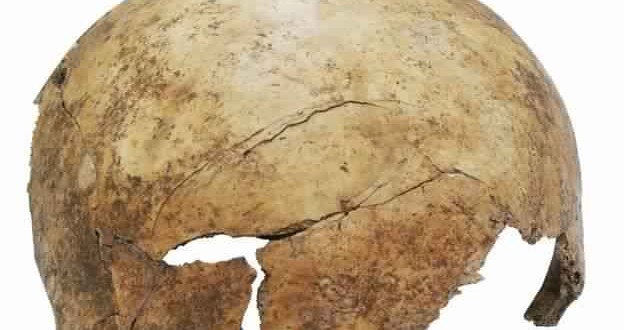The Early Neolithic massacre-related mass grave of Schöneck-Kilianstädten presented here provides new data and insights for the ongoing discussions of prehistoric warfare in Central Europe.
A mass grave containing at least 26 skeletons is further evidence of the brutal conflict that appears to have beset central Europe 7,000 years ago.
Most of the skull bones revealed that the victims had been hit over the head with a blunt instrument, while arrow heads nearby suggest they could have been killed by bowmen.
But for the first time there was evidence of deliberate and systematic smashing of the lower leg bones of a number of individuals suggesting that the victims were either tortured before or mutilated after death.
The grave was discovered at Schöneck-Kilianstädten, Darmstadt, in 2006, and archaeologist have been excavating the site and studying the bones ever since.
The researchers say the remains, taken with similar sites from the period, demonstrate a pattern of large-scale mass violence during the time.
Lead researcher Christian Meyer, of the Institute of Anthropology, University of Mainz, said; “The concerted annihilation of entire social units, one of the hallmarks of early warfare, is not clearly evident from the analysis of human skeletal remains from three separate localities.
“Massacres seem to have been the most powerful strategy in prehistoric warfare and the oestoarchaeological evidence from the Early Neolithic shows that such acts of mass violence were carried out repeatedly in the deep human past by groups living in prisitine prestate conditions.
“”The abundance of the fractures clearly indicates torture and/or mutilation of the victims.”
The first record of a prehistoric battle was found at the 14,340- to 13,140-year old Mesolithic site known as Cemetery 117 located on the Nile near the Egypt Sudan border.
The Talheim Death Pit, discovered in 1983 in Germany was the first evidence of organised warfare in the Neolithic. It contained 34 bodies.
Agencies/Canadajournal
 Canada Journal – News of the World Articles and videos to bring you the biggest Canadian news stories from across the country every day
Canada Journal – News of the World Articles and videos to bring you the biggest Canadian news stories from across the country every day



